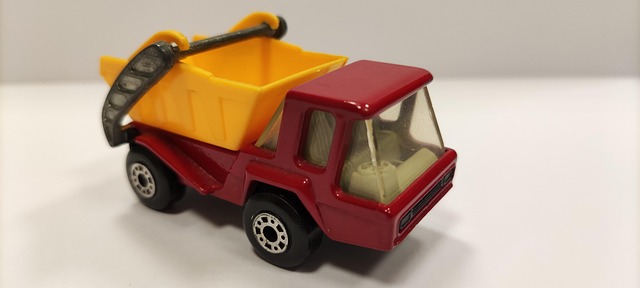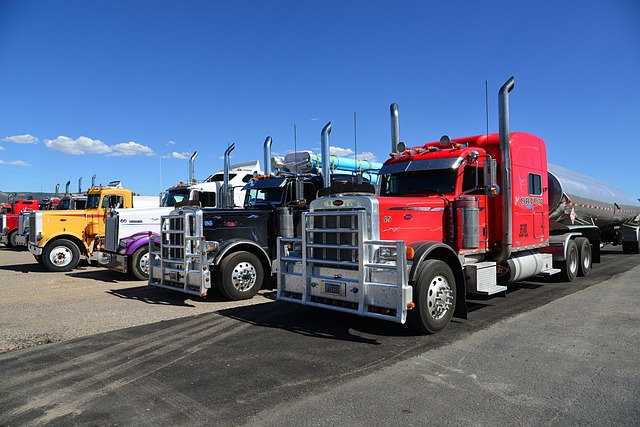Looking to register your car in California? This comprehensive guide walks you through every step, from understanding key requirements for car registration in California to scheduling a visit at your local DMV office. We’ll detail the necessary documents needed for crucial DMV VIN verification and provide a step-by-step process for a smooth registration. Plus, discover post-registration tips and tricks to ensure everything runs smoothly.
- Understand the Requirements for Car Registration in California
- Gather Necessary Documents for DMV VIN Verification
- Schedule and Visit Your Local California DMV Office
- Complete the Registration Process: Step-by-Step Guide
- Post-Registration: Important Next Steps and Tips
Understand the Requirements for Car Registration in California

Before registering your car in California, it’s crucial to understand the requirements and necessary steps. The California Department of Motor Vehicles (DMV) mandates several key processes for ensuring vehicle safety and proper documentation. One critical step is the DMV VIN verification, which involves cross-referencing the unique Vehicle Identification Number (VIN) with the vehicle’s specifications and history. This process helps verify that your car meets all legal standards before it can be titled and registered.
Additionally, you may consider options like a mobile vin inspection or using a mobile vin verifier to streamline the verification process. These services can provide convenience by allowing for on-site checks, which are especially beneficial if you’ve recently purchased a used vehicle. Ensuring that your car passes all required inspections is essential to avoid delays in registration and potential legal issues down the line.
Gather Necessary Documents for DMV VIN Verification

To register your car in California, you’ll need to undergo DMV VIN verification, a crucial step in the process. First, gather all essential documents, including your vehicle’s registration certificate from the previous state (if applicable), proof of insurance, and a valid driver’s license. Additionally, you’ll require the Vehicle Identification Number (VIN) from your car, which can typically be found on the vehicle’s certificate of origin or engine/chassis label. For a seamless experience, consider utilizing a mobile vin inspection or mobile vin verifier service, allowing for convenient and efficient verification right at your location.
Ensure that your car meets California’s safety and emission standards before proceeding. The state may require additional documents, such as proof of ownership, especially if the vehicle is new or has been recently imported. Having these documents ready facilitates a smoother dmv vin verification process.
Schedule and Visit Your Local California DMV Office

Before registering your car in California, scheduling a visit to your local DMV office is essential. This step ensures that you have all the necessary documents and information ready for a smooth process. The DMV provides various services, including vehicle registration, title transfers, and important verifications like VIN (Vehicle Identification Number) checks.
During your visit, be prepared to present key documents such as proof of ownership, insurance, and identification. A mobile VIN verification service can also prove beneficial here, as it allows you to check your vehicle’s history remotely, ensuring that all details are accurate before heading to the DMV. This saves time and effort, especially for those with busy schedules.
Complete the Registration Process: Step-by-Step Guide

To complete the registration process for your car in California, follow this step-by-step guide. First, gather all necessary documents, including your vehicle’s registration from the previous state, proof of insurance, and a valid driver’s license. Then, visit your local California Department of Motor Vehicles (DMV) office or use the DMV’s online services for a convenient digital experience.
Next, you’ll need to perform a DMV VIN verification, which ensures that your vehicle’s Vehicle Identification Number (VIN) matches the details in its title and registration. This step is crucial and can be easily accomplished through a mobile VIN inspection or using a trusted mobile VIN verifier. Once your VIN is verified, proceed with filling out the registration forms, providing details about your vehicle, and paying the required fees. Ensure all information is accurate to avoid future issues.
Post-Registration: Important Next Steps and Tips

After successfully registering your car with the California DMV, there are several crucial steps to ensure a smooth ownership experience. One critical task is to obtain a Vehicle Identification Number (VIN) verification from a trusted source. This process is essential for proving the authenticity of your vehicle’s details, including its history and specifications. You can opt for a traditional DMV inspection or consider using a mobile vin inspection service, which offers convenience by coming to your location.
Additionally, keeping your registration up-to-date is vital. Ensure you stay informed about renewal deadlines and any required documentation updates. Regularly checking your vehicle’s maintenance records and promptly addressing any issues will help maintain its value and safety. Utilizing a mobile vin verifier can aid in this process by providing quick and accurate information about your car, making it easier to manage these important tasks.
Registering a car in California involves understanding specific requirements, gathering essential documents, and visiting your local DMV office for VIN verification. By following our step-by-step guide and post-registration tips, you’ll ensure a smooth process. Remember, proper registration not only complies with legal obligations but also protects your investment and facilitates smoother driving experiences within the Golden State.



